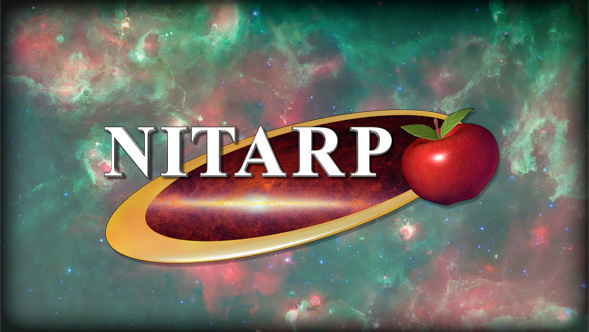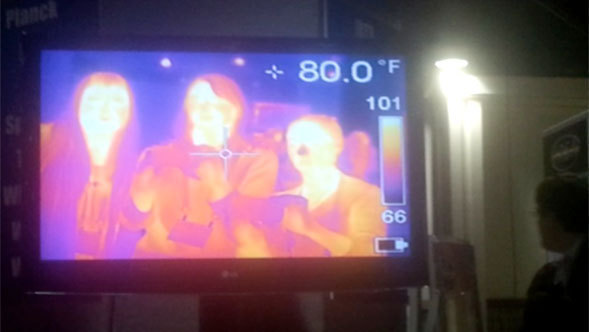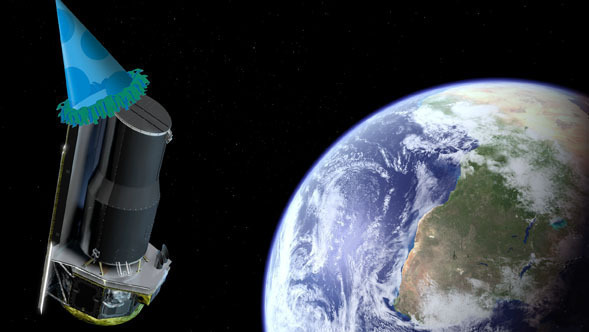
By Luisa Rebull | October 15th, 2012
I have the pleasure of announcing the 2013 class of educators for NITARP, the NASA/IPAC Teacher Archive Research Program! NITARP, as I've mentioned before, is an effective and inspiring way to get authentic research experiences into classrooms across the United States. We partner professional scientists with (primarily) high school teachers, carry out an original research project, and present the results at the semi-annual meeting of the American Astronomical Society. The teachers incorporate the experience into their classrooms and share their experience with other teachers.
This program, to the best of our knowledge, is completely unique in the following important ways: (1) each team does original research using real astronomical data, not canned labs or reproductions of previously done research; (2) each team is encouraged to involve students throughout the process; (3) each team writes up the results of their research and presents it at an American Astronomical Society meeting (the AAS is the professional organization for astronomers in the US). Each team also presents the educational results of their experience in the program.
This year (2012), we had a record class size of 19 educators of a wide variety of backgrounds. We included for the first time two museum-based educators, which provides us another venue to convey the excitement of real research to the general public. The teams are currently working on nine different posters on their science and education results to take to the 220th AAS meeting, planned for January 2012 in Long Beach, CA. I'll have another blog posting on the broad spectrum of projects and results they're presenting.
We select teachers for this program competitively from a nation-wide application process. This year, we had more teachers than ever apply -- about five times as many teachers applied as we had spots! The competition was more stiff than ever before. Here for the first time ever, is the brand-new list of 18 teachers to start with their teams in January 2013! They include traditional classroom high school teachers, and non-traditional educators from museums and other institutions. They are from big cities and small towns, from all over the contiguous US. They will study nearby things and far away things, at wavelengths from the optical through the mid-IR. Look for results of their projects in January 2014!!
Team working with Dr. Luisa Rebull (Spitzer Science Center)
- John Gibbs (Glencoe High School, Hillsboro, OR) - teacher mentor for team
- Wendi Laurence (NASA AESP, Park City, UT)
- Robert Marshall (Buhl Planetarium & Observatory, Carnegie Science Center, Pittsburgh, PA)
- Michael Murphy (Ravenscroft School, Raleigh, NC)
- Laura Orr (Ukiah High School, Ukiah, OR)
- Christi Whitworth (Pisgah Astronomical Research Institute, Rosman, NC)
- Russ Laher (SSC, Pasadena, CA) - IPAC staff participant
Team working with Dr. Varoujan Gorjian (SSC/JPL)
- John Blackwell (Phillips Exeter Academy, Exeter, NH) - teacher mentor for team
- Thomas Rutherford (Sullivan South High School, Kingsport, TN)
- Nicole Granucci (Oxford High School, Oxford, CT)
- Theresa Paulsen (Mellen High School, Mellen, WI)
Team working with Dr. David Ciardi (NExScI) and Dr. Steve Howell (NASA/Ames)
- Sally Seebode (San Mateo High School, San Mateo, CA) - teacher mentor for team
- Fred Donelson (Gahanna Lincoln High School, Gahanna, OH)
- Holly Bensel (St. Mary's School, Medford, OR)
- Danielle Miller (University High School, Orlando, FL)
Team working with Dr. Babar Ali (NASA Herschel Science Center)
- Peggy Piper (Lincoln-Way North High School, Frankfort, IL) - teacher mentor for team
- Melissa Booker (Robinson Secondary School, Fairfax, VA)
- Carol Ivers (Foran High School, Milford, CT)
- Lynn Powers (Bozeman High School, Bozeman, MT)
The Spitzer Science Center (SSC) and the NASA Infrared Processing and Analysis Center (IPAC) are leading this program. We use archival data from the Spitzer Space Telescope, the NASA/IPAC Extragalactic Database (NED), the NASA/IPAC/NExScI Star and Exoplanet Database (NStED), the NASA/IPAC Infrared Science Archive (IRSA) and other NASA archive holdings. Our funding comes from the NASA Astrophysics Data Program (which is where professional astronomers go for Spitzer archival research), and the other archives at IPAC.
 My Visit to AAS with NITARP
My Visit to AAS with NITARP
 Happy 9th Birthday, Spitzer!
Happy 9th Birthday, Spitzer!



